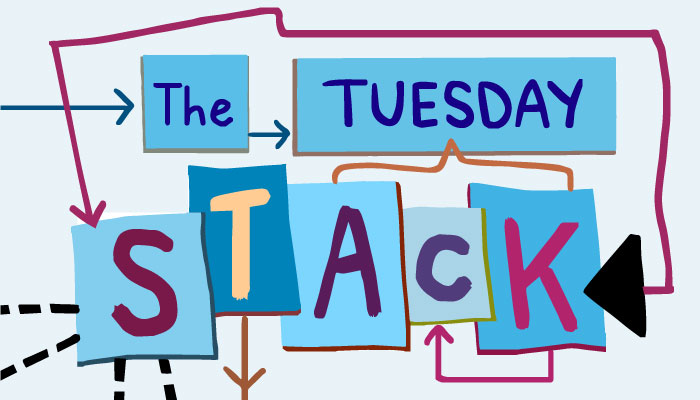Here’s the end of summer news roundup. First up, if Salesforce is the four fastest growing brands in the world, why not launch a campaign to trumpet its success globally? “We Bring Companies and Customers Together” is the headline message, released today on the eve of CMO Stephanie Buscemi’s keynote at DMEXCO.
The purpose of the campaign is to unpack the meaning of Salesforce as a brand. It’s undeniably strong identity rests on three ideas (identified by Buscemi in a blog post):
- Product: being the world’s number one CRM
- People: changing lives through the Trailblazers-Trailhead professional development initiative, and
- Planet: being a company people trusts to do good.
If this is the era of the customer, it presents enormous challenges for companies, with the expectation of immediate availability, seamless interaction, and clear brand values. Hence that headline. “Every employee gets the same 360-degree view of every customer and the same power to deliver great experiences, and build trust, at every step,” Buscemi wrote.
**********
AdRoll has been a familiar name for more than a decade as an advertising and re-targeting solution. But from now on, get used to it being part of NextRoll. The rebranding of the AdRoll Group was announced this morning, and seems to reflect the company’s growth into a broader marketing tech and services offering for B2B as well as B2C.
NextRoll is comprised of three business units:
- AdRoll, the marketing platform for DTC brands
- RollWorks, an ABM platform for B2B marketing and sales, and
- NextRoll Platform Services, Marketing-Tech-as-a-Service for brands, agencies, and publishers.
Services immediately available include Channels-as-a-Service, with integrations to more than 20 publishers and ad exchanges; and Audiences-as-a-Service, unifying customer profiles across platforms within their NextRoll data set, and offering packaged audiences for execution or re-sale.
**********
Meanwhile, back to the bots. Not chatbots, this time, but the bots which feature in robotic process automation (RPA) and robotic desktop automation (RDA). These bots, essentially, can serve to automate vast quantities of repetitive, time-consuming tasks previously undertaken manually by online workers. Pega, the customer engagement platform, is a leading force in the robot space, yet counter-intuitively has been emphasizing for some time all the things that can go wrong (“Most of our competitors are not very good at it, ” as CEO Alan Trefler once told me).
The two consistent themes heard from Pega have been that many robots are badly built, and that users seek to insert robots into existing processes, rather than reviewing, refining, and streamlining the processes first. And here comes Pega with some data.50 percent said robots were harder to deploy than expected
- 50 percent of businesses said robots were harder to deploy than expected (taking a remarkable 18 months on average to roll out
- 40 percent find RPA takes more time and resources to maintain than expected (33 percent say the same of RDA)
- 87 percent experience some level of bot failure (small to moderate breakage is common; only 6 percent called it large).
But the robots aren’t going away, because despite all those problems, they work — on balance.
- 51 percent reported that robots enable more efficient, effective, and accurate work
- 45 percent found an overall reduction in business costs
- 42 percent report happier employees (and 40 percent happier customers).
All the details can be found here.
***********
Adobe is still polishing its Adobe Target offering within the Adobe Experience Cloud. In the coming weeks, they’ll be making some enhancements to the personalization capabilities:
- Recommendations based on last item viewed/purchased, or recent online behavior? The new “Recommended for You” algorithm, supported by Adobe Sensei AI, takes a longer view, and offers recommendations when there is little immediate context — for example, using past, seasonal browsing behavior (snowboots, anyone?) to make predictive recommendations ahead of coming seasons
- New mobile app tutorials, with sample code and applications, and better documentation, to speed the development and deployment of mobile personalization efforts, and
- Advice on best practices through the Adobe Experience League community.
Meanwhile, over at Adobe Analytics, concepts derived from Photoshop are driving enhancements to customer journey analytics. Nate Smith, of the Analytics Cloud (who has explained much to us before) explains this:
From the start, the team developed the Customer Journey Analytics interface with cues taken directly from Photoshop. Both are rooted in the concept of layers: With Photoshop, images and graphics are sourced, edited and layered on top of one another to create a new visual. In Customer Journey Analytics, the layers are data sets instead. Brands can curate metrics such as orders, conversion and visits—across different channels with Adobe Experience Platform—and drag-and-drop layers of data together to uncover new insights about how customers engage with the brand. It provides many different lenses into the overall customer journey.
In practice, this means an ability to answer complex questions about the customer journey, by layering multiple data sources (eCommerce, transactional, physical) within the same dashboard, accessible to business users and not just data scientist. Prebuilt AI models in the platform can surface predictive recommendations based on the data.
Finally, there’s a Cross-Device Analytics solution too, combining a customers’ cross-device activity into a single journey stream.
**********
A last word: it’s just over a week to go until our festive 40Under40 celebration on New York’s waterways. In addition to networking opportunities with high-flying young marketers (and food and drink, of course), we’ll also be featuring an interactive fireside chat with Nina Giordano, Social Media Manager at Panasonic North America, and former Global Social Media Manager at Morgan Stanley. If you move fast…there might be a ticket left.








